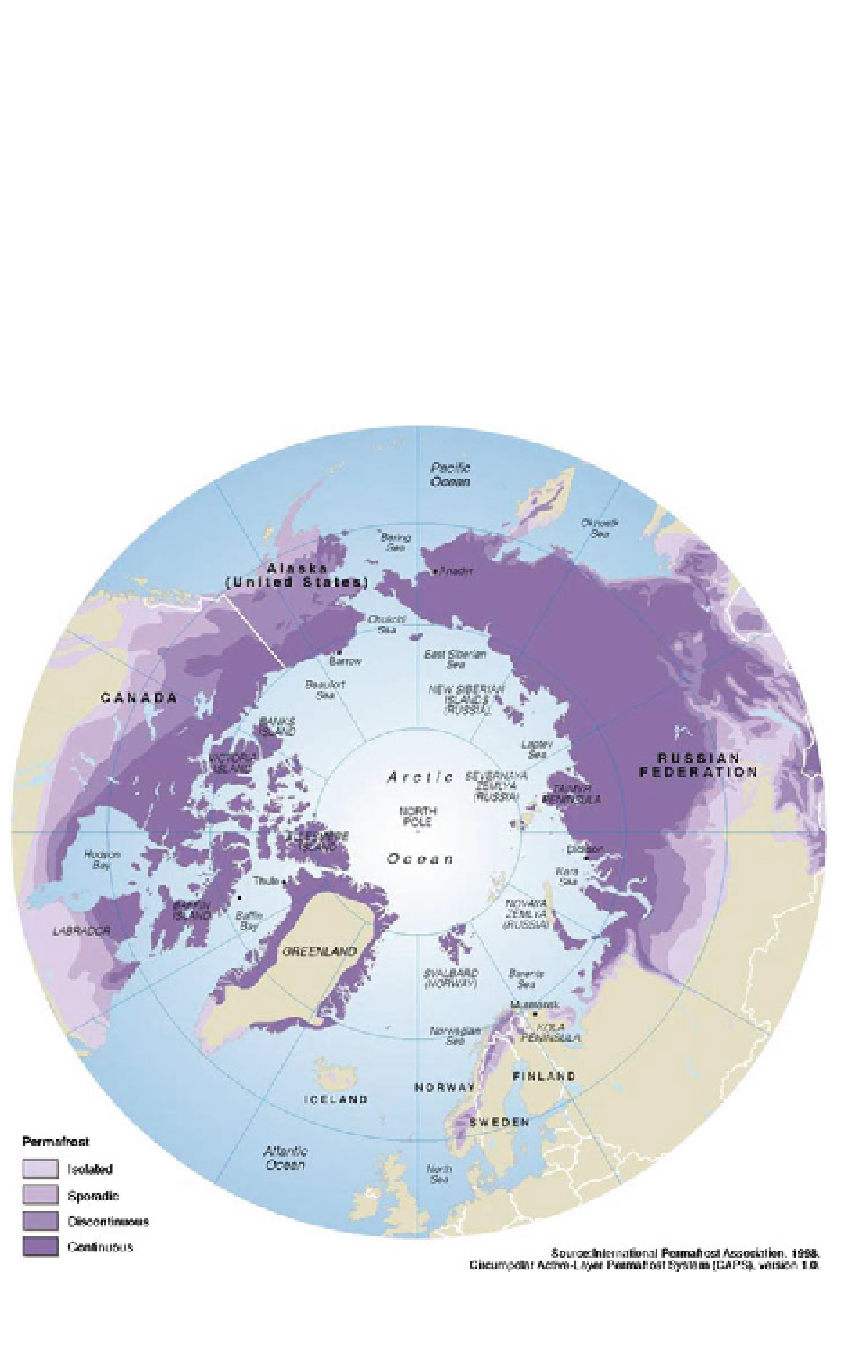Geoscience Reference
In-Depth Information
3 Permafrost
Permafrost and wetlands are two focal points in the coupling of hydrology to biogeo-
chemical processes under climate change conditions. A large part (*24 %) of the northern
hemisphere terrestrial land surface is underlain by permafrost (French
1990
) that is mainly
situated in high latitudes (Fig.
7
). Here, climate warming is more pronounced than else-
where and is very likely to continue to do in the future according to Solomon et al. (
2007
).
Permafrost soils build a globally relevant carbon reservoir as they store large amounts of
deep-frozen organic material with high carbon contents. If permafrost thaws under global
warming conditions, the stored carbon can be decomposed and released to the atmosphere
as additional greenhouse gas, which will lead to a positive feedback. Consequently, rel-
evant scientific questions are the following: How fast, how deep and to what temperature
are permafrost soils going to thaw in the future?
Fig. 7
Distribution of permafrost areas in the Arctic according to the International Permafrost Association
(
1998
)

